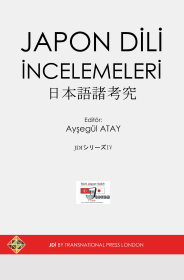Japon Edebiyatı Eğitimi ve Toplum - Kawabata Yasunari’nin Shojo no Inori『処女の祈り』 Öyküsü Örneklemi -
Japanese Literature Education and Society - A Sample of Kawabata Yasunari’s Shojo no Inori『処 女の祈り』Narrative
Author(s): Nihan Atli
Subject(s): Gender Studies, Education, Studies of Literature
Published by: Transnational Press London
Keywords: Japanese literature education; Tzvetan Todorov; Kawabata Yasunari; narrative;
Summary/Abstract: Language Acquisition requires the acquisition of the social structure and cultural characteristics of the target language. Thus, teaching of the target culture and the social lifestyle should be integrated in to the language teaching process. The most important feature that distinguishes the language education departments from the language courses is to teach the cultural and social characteristics of the language. It is thought that the education of Department of Japanese Language and Literature should foster the teaching of target culture. As literature is a source that reflects the structure of society through language, literary works are used as course materials in order to supply learning outcomes in learning process. Therefore, it is possible to reach the individuals forming the society, the responsibilities the society places on the individuals and the perception of the individuals in society via literary works. In this regard, it is thought that the use of literary works will contribute to language teaching in cultural and social aspects. In this study, it is aimed to reach the idea of “woman” as a member of the society within the selected narrative of the tetiory level learners (juniors and seniors), advanced – level in Japanese language, at the Department of Japanese Language and Literature based on the education of Japanese Literature. Tzvetan Todorov’s narrative analysis method which is based on the state of balance of the narratives was preferred as the research methodology which is practical for the implementation and comprehensible for the learners. In this study, the narrative of Kawabata Yasunari’s Shojo no Inori『処女の 祈り』 which came to the fore with the descriptions of women characters, was chosen as a sample. To conclude, learners of the study realized that there was a relation between the selected narrative and Kojiki known as the first historical source in Japan. It was seen that features of Goddess in Kojiki were referred to the women characters in the narrative by the writer. With the research methodology, Todorov’s method, the learners had gained a methodological aspect rather than reading the literary text basicly and had developed their text-analysis abilities.
Book: Japon Dili İncelemeleri / 日本語諸考究
- Page Range: 169-183
- Page Count: 15
- Publication Year: 2018
- Language: Turkish
- Content File-PDF

